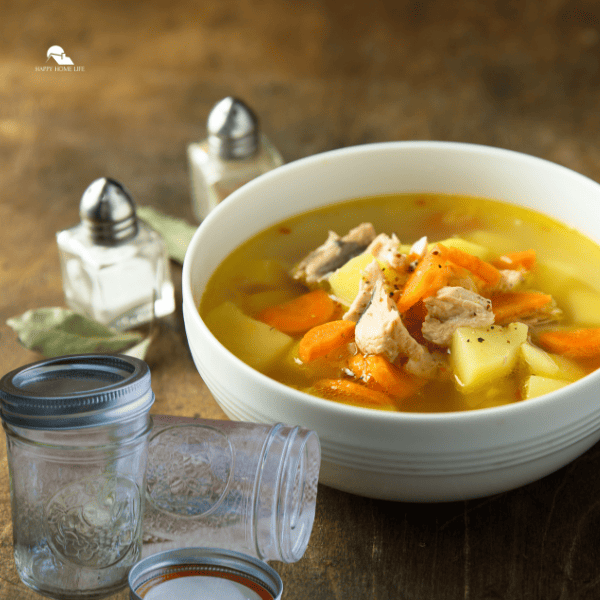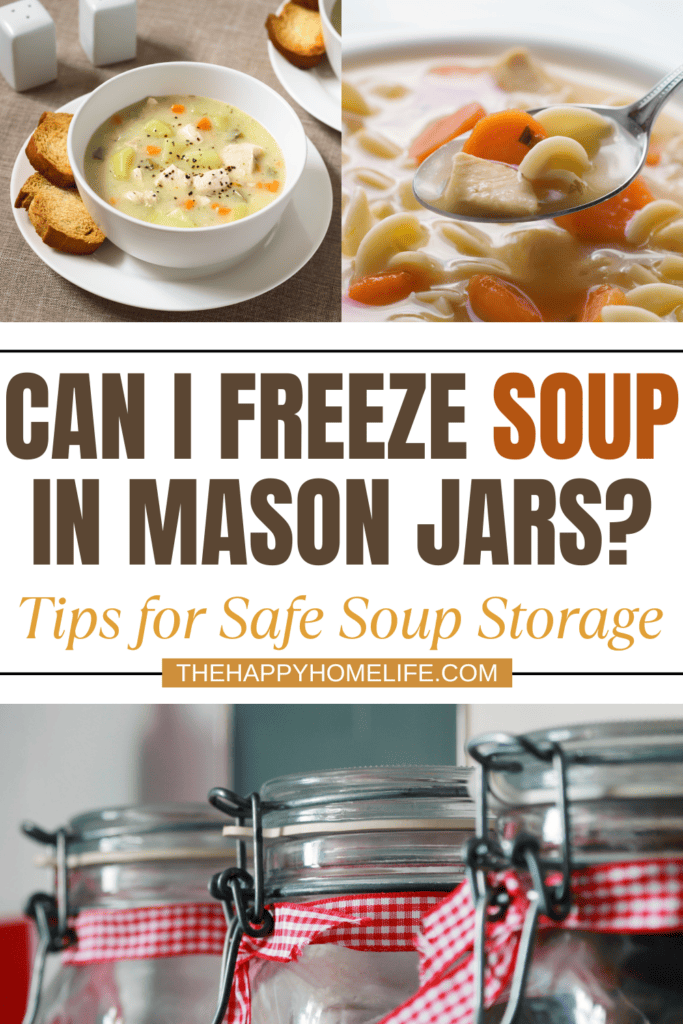Can I freeze soup in mason jars? Let’s find out! Mason jars can be a convenient way to preserve homemade soups for later consumption. They are a reliable option due to their durability and the quality of the glass used in their manufacturing.
When you decide to freeze soup in mason jars, you must take into account important considerations to prevent the glass from breaking due to liquid expansion during the freezing process.
It’s essential to understand that when liquids freeze, they expand. This is crucial when dealing with glass containers, as they can crack or shatter if there isn’t enough space to accommodate the expanding soup. To ensure safety and maintain the integrity of your soup, you must leave adequate headspace in the jar. This space at the top allows the soup to expand upward as it freezes, reducing the risk of breaking the glass.
Can I Freeze Soup in Mason Jars?
The best way to freeze soup in mason jars is to cool the soup before placing it in the jars and then transfer it into clean, wide-mouth jars, making sure to leave the recommended headspace. Wide-mouth jars are especially ideal because they do not have shoulders, allowing for more even expansion and preventing stress points where cracking could begin.
By following these steps, you can confidently store your soup, knowing it will be well-preserved and ready to enjoy later.

Preparing Soup for Freezing
Before freezing soup in mason jars, selecting proper jars and preparing them appropriately to prevent breakage and ensure food safety is crucial.
Selecting the Right Jars
To withstand low temperatures, choose freezer-safe mason jars, typically made from tempered glass. Brands like Ball and Kerr offer wide-mouth jars that are ideal for freezing. Wide-mouth jars allow easier filling and removal of frozen contents. Opt for jars in sizes that suit your needs; quart-size or 24 oz wide-mouth jars are common choices.
Cooling and Ladling
After cooking your homemade soup, broth, soups, or stews, let them cool to room temperature. This can be done by placing the pot in a sink filled with cold water or leaving it to cool in the fridge. Use a ladle in conjunction with a canning funnel to neatly transfer the soup into your jars, reducing spills and ensuring a clean rim for seal integrity.
Leaving Appropriate Headspace
Proper headspace, the gap between the soup and the jar’s rim, is essential to allow for expansion during freezing. For freezing, leave at least one inch of headspace. Seal the jars with either plastic lids or metal lids with bands. While metal lids are sturdy, plastic lids can be more convenient for repeated use.
Label each jar with the soup type and freezing date using a permanent marker on a label or masking tape for easy identification later.

Freezing and Thawing Tips
Consider container choice, air exposure, and proper temperature control to successfully freeze soup in mason jars and ensure quality when thawing.
Effective Freezing Methods
When freezing soup, choosing the right container is crucial for maintaining quality. Glass mason jars are suitable for freezing soups, including broth and spaghetti sauce, as long as they are freezer-safe. Here’s what to do:
- Use Wide-Mouth Jars: Select wide-mouth mason jars to minimize the risk of breakage as the soup expands upon freezing.
- Leave Head Space: Fill the jars, leaving about an inch of space at the top to allow expansion.
- Cool Before Freezing: Let soups cool to room temperature before sealing to avoid temperature fluctuations in the freezer.
- Airtight Sealing: Ensure the jars are airtight with metal lids. For cream soups or those containing dairy, consider using alternative freezer bags or plastic containers specially designed for freezing.
Thawing and Reheating
To safely thaw frozen soup, follow these steps:
- Refrigerator Thawing: Transfer the soup from the freezer to the refrigerator 24 hours prior to when you plan to eat it.
- Water Bath: For a quicker method, submerge the sealed mason jar in cold water, changing the water every 30 minutes.
- Microwave: If you’re in a rush, you can defrost your soup in the microwave. Remove the metal lid first, and use a microwave-safe cover.
Preventing Freezer Burn
Freezer burn occurs when air reaches the food’s surface, drying it out and compromising quality and taste. To prevent this:
- Wrap Tightly: If using containers other than mason jars, wrap tightly with plastic to minimize air contact.
- Labeling: Label jars with their contents and the freezing date, ensuring you use older batches first and reduce the chance of freezer burn.
- Adequate Temperature: To slow deterioration, keep your freezer at 0°F (-18°C) consistently.
By carefully preparing soups for freezing, ensuring airtight sealing, and using proper thawing techniques, you can enjoy your soups as convenient meal prep or quick lunch options while preserving their taste and nutritional value.







